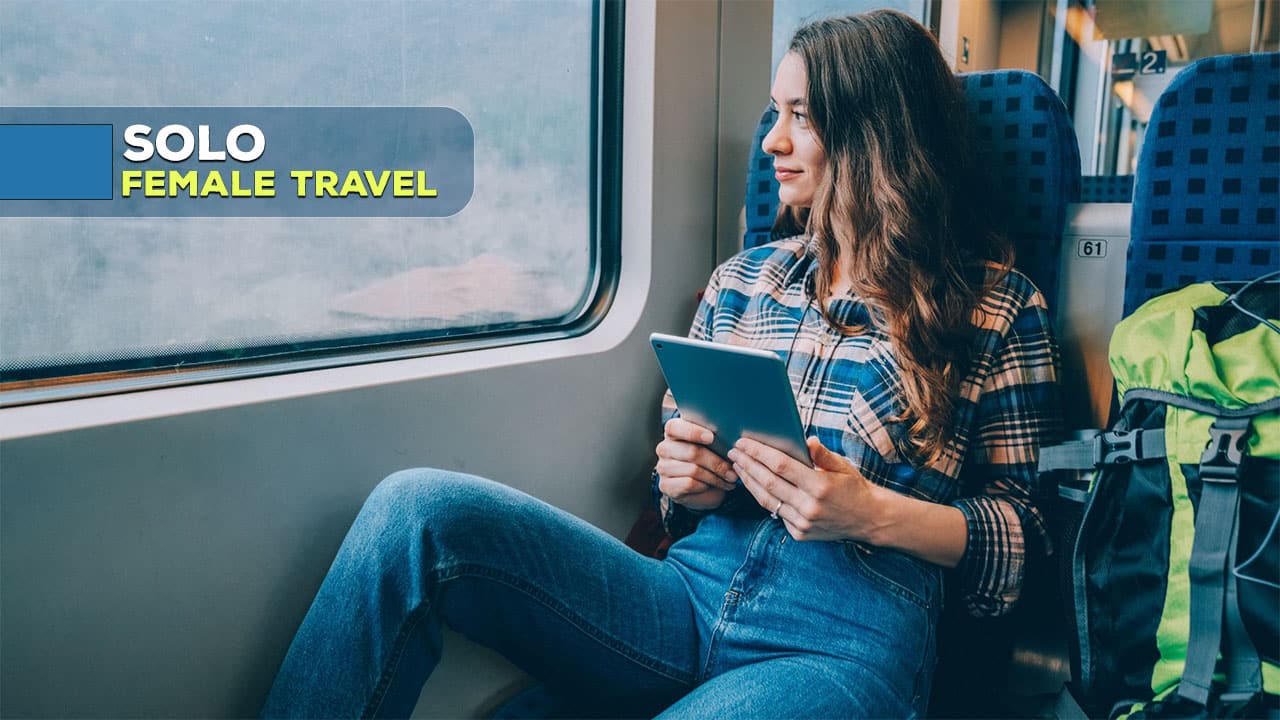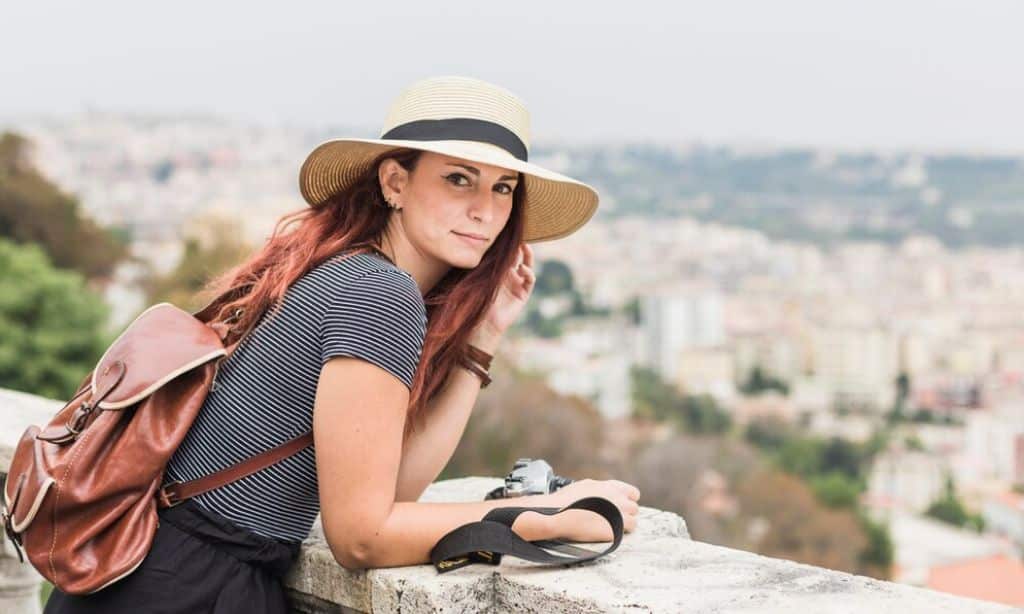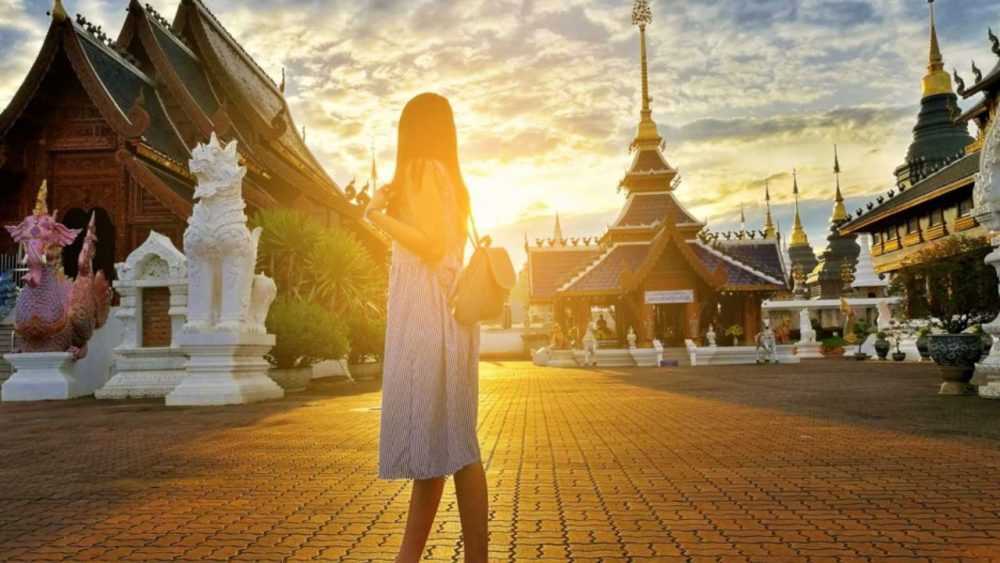In recent years, solo female travel has experienced a significant surge in popularity. This trend is more than just a fad; it reflects broader societal changes and shifting attitudes toward women’s independence and empowerment.
Women worldwide are increasingly choosing to explore the globe on their terms, seeking adventure, personal growth, and the freedom to travel without compromise.
From hiking the Himalayas to cycling across continents, solo female travelers challenge stereotypes and carve out spaces for themselves in every corner of the world.
This comprehensive guide delves into the rise of solo female travel, sharing empowering stories, practical safety tips, and valuable insights to inspire and prepare women for their adventures.
Join us as we explore the transformative power of solo travel and celebrate the courage and resilience of women who embrace the world alone.
The Rise of Solo Female Travel
In recent years, solo female travel has experienced a significant surge in popularity. This trend is more than just a fad; it reflects broader societal changes and shifting attitudes toward women’s independence and empowerment.
Statistics and Trends
According to a 2019 survey by Booking.com, 72% of American women have embarked on solo journeys, and this number is only growing. The travel industry has noticed, with many companies now offering specialized tours and accommodations catering to solo female travelers.
A report by Hostelworld revealed that bookings by solo female travelers increased by 45% between 2015 and 2017. This growth rate was much higher than that of their male counterparts or couples traveling together.
Reasons for the Increase
Several factors contribute to the rise of solo female travel:
- Economic Independence: As more women enter the workforce and achieve financial independence, they have the means to fund their travel adventures.
- Shifting Social Norms: There’s a growing acceptance of women pursuing their passions and interests independently, including travel.
- Social Media Influence: Platforms like Instagram and travel blogs have made solo female travel more visible, inspiring others to follow suit.
- Desire for Personal Growth: Many women see solo travel as an opportunity for self-discovery and empowerment.
- Flexibility: Solo travel allows less control over itineraries and experiences, free from compromising with travel companions.
Impact on the Travel Industry
The rise of solo female travelers has prompted changes in the travel industry:
- Female-Only Tours: Many companies now offer tours exclusively for women, providing a supportive and safe environment for solo travelers.
- Safety Features: Hotels and hostels are implementing additional safety measures, such as female-only floors or enhanced security systems.
- Networking Opportunities: Travel apps and websites now include features to help solo travelers connect.
- Reduced Single Supplements: Some companies are reducing or eliminating the extra charges often imposed on single travelers.
The growing prevalence of solo female travel is not just changing the face of tourism; it’s challenging stereotypes and empowering women to explore the world on their terms.
Empowering Stories from Solo Female Travelers
Behind the statistics are real women with incredible stories of adventure, growth, and empowerment. Let’s dive into some inspiring tales from solo female travelers worldwide.
Sarah’s Himalayan Adventure
Sarah, a 28-year-old teacher from Canada, decided to take a sabbatical to trek in the Himalayas. Despite concerns from friends and family about her safety, she embarked on a three-month journey through Nepal and Tibet.
“The first few days were terrifying,” Sarah admits. “But as I met other travelers and kind locals, I realized that the world wasn’t as scary as I’d been led to believe. I felt invincible when I reached Everest Base Camp, alone but surrounded by new friends.”
Sarah’s journey challenged her physically and shattered her preconceptions about solo travel. She returned home with a newfound confidence that has impacted every aspect of her life.
Maria’s Cross-Continental Cycling Tour
Maria, a 35-year-old graphic designer from Brazil, took solo travel to the extreme with a cycling tour from Alaska to Patagonia. Over 18 months, she pedaled through 14 countries, covering more than 17,000 miles.
“People thought I was crazy,” Maria laughs. “A woman cycling alone through the Americas? But I’ve never felt more alive. The kindness I encountered along the way restored my faith in humanity.”
Maria’s journey was not without challenges. She faced extreme weather, mechanical issues, and occasional harassment. However, she also experienced incredible generosity from strangers and formed lifelong friendships with fellow travelers and locals alike.
Yuki’s Cultural Exploration in the Middle East
Yuki, a 40-year-old entrepreneur from Japan, chose to explore the Middle East solo, raising eyebrows among her peers. Her journey took her through Jordan, Oman, and the United Arab Emirates.
“As an Asian woman traveling alone in the Middle East, I stood out,” Yuki explains. “But this often led to fascinating conversations and invitations into people’s homes. I learned so much about the rich culture and hospitality of the region.”
Yuki’s experience challenged her preconceptions and those of the people she met. She became an unofficial cultural ambassador, breaking down stereotypes on both sides.
Amina’s Solo Safari in East Africa
Amina, a 50-year-old doctor from Egypt, fulfilled a lifelong dream by going on a solo safari through Kenya and Tanzania. Despite initial hesitations about traveling alone at her age, she found the experience rejuvenating.
“I’ve always loved wildlife, but I never thought I’d see it up close on my own,” Amina shares. “Watching a lioness with her cubs, with no one else around, was a spiritual experience. It made me realize it’s never too late to pursue your dreams.”
Amina’s journey inspired her to start a travel group for women over 50 in her home country, encouraging others to leave their comfort zones.
Lisa’s Digital Nomad Journey in Southeast Asia
Lisa, a 32-year-old software developer from the United States, combined solo travel with remote work, spending a year hopping between co-working spaces in Southeast Asia.
“I was burnt out from my 9-to-5 job and craved a change,” Lisa explains. “Solo travel as a digital nomad allowed me to experience new cultures while advancing my career. It taught me adaptability and resilience in ways I never expected.”
Lisa’s journey transformed her approach to work and life. She now runs workshops helping other women blend travel with remote work opportunities.
These stories represent just a fraction of the incredible experiences of solo female travelers. Each journey is unique, but shares expected personal growth, challenge, and empowerment themes. These women explored the world and discovered new dimensions of themselves in the process.
Safety Tips for Solo Female Travelers
While the stories of solo female travelers are inspiring, it’s crucial to address the topic of safety. Here are some comprehensive tips to help women stay safe while traveling alone:
1. Research Your Destination
- Cultural Norms: Understand local customs, especially regarding dress codes and behavior for women.
- Safe Areas: Identify safe neighborhoods and areas to avoid, particularly at night.
- Local Laws: Familiarize yourself with local laws and emergency numbers.
2. Plan Your Accommodation Wisely
- Read Reviews: Choose accommodations with positive reviews from solo female travelers.
- Location: Opt for places in well-lit, busy areas with easy access to public transportation.
- Safety Features: Look for accommodations with 24-hour reception, security cameras, and room safes.
3. Stay Connected
- Share Your Itinerary: Keep family or friends informed about your travel plans.
- Regular Check-ins: Establish a routine for checking in with loved ones.
- Offline Access: Download offline maps and translation apps for emergencies.
4. Be Aware of Your Surroundings
- Trust Your Instincts: If a situation feels unsafe, remove yourself immediately.
- Avoid Oversharing: Be cautious about sharing personal information with strangers.
- Stay Alert: Limit alcohol consumption and be wary of accepting drinks from strangers.
5. Secure Your Belongings
- Use Locks: Secure your luggage with TSA-approved locks.
- Separate Valuables: Don’t keep all your money and documents in one place.
- Use Hotel Safes: Store valuable items in hotel safes when possible.
6. Transportation Safety
- Licensed Taxis: Use official, licensed taxis or reputable ride-sharing apps.
- Public Transportation: Be extra vigilant on public transport, especially at night.
- Walking: Stick to well-lit, busy streets and walk confidently.
7. Health and Wellness
- Travel Insurance: Invest in comprehensive travel insurance that covers medical emergencies.
- Medications: Bring an adequate supply of necessary medications and prescriptions.
- First Aid Kit: Pack a basic first aid kit for minor emergencies.
8. Blend In
- Dress Appropriately: Try to dress like locals to avoid drawing unnecessary attention.
- Be Discreet: Avoid flashy jewelry or displaying expensive electronics in public.
- Learn Basic Phrases: Knowing a few words in the local language can help you blend in and navigate better.
9. Use Technology Wisely
- Offline Maps: Download offline maps of your destination for navigation without the internet.
- Safety Apps: Consider using personal safety apps that alert contacts in an emergency.
- Portable Charger: Carry a portable charger to ensure your devices don’t die at crucial moments.
10. Trust Your Intuition
- Listen to Your Gut: If something feels off, it probably is. Don’t be afraid to change plans or leave a situation that makes you uncomfortable.
- Confidence is Key: Walk and act confidently, even if unsure.
- It’s Okay to Lie: If you feel threatened, lying about having a partner nearby or meeting friends soon is okay.
Remember, while these tips are essential, they shouldn’t overshadow the joy and empowerment of solo travel. The vast majority of solo female travelers have safe, enriching experiences. By being prepared and aware, you can minimize risks and fully embrace the incredible journey of solo travel.
Choosing Your Destination
Selecting the right destination is crucial for a successful solo female travel experience. Here are some factors to consider and a list of countries often recommended for solo female travelers:
Factors to Consider
- Safety: Research crime rates, particularly those affecting tourists and women.
- Cultural Attitudes: Consider how women are viewed and treated in the local culture.
- Tourism Infrastructure: Look for places with well-developed tourism sectors and easy transportation.
- Language Barrier: Assess your comfort level with the local language or the prevalence of English speakers.
- Budget: Consider the cost of accommodation, food, and activities in your chosen destination.
- Personal Interests: Choose a place that aligns with your interests, whether history, nature, food, or adventure.
Top Destinations for Solo Female Travelers
While personal preferences vary, these countries are often recommended for solo female travelers due to their safety, friendliness, and ease of travel:
- Japan: Known for its low crime rate, efficient public transportation, and unique culture.
- New Zealand: Offers stunning natural beauty, friendly locals, and excellent infrastructure for solo travelers.
- Iceland: Consistently ranked as one of the safest countries in the world, with breathtaking landscapes.
- Canada: Known for its diverse cities, beautiful nature, and welcoming atmosphere.
- Portugal: Offers a perfect blend of history, culture, and beautiful beaches, with a reputation for being safe and affordable.
- Thailand: Popular among solo travelers for its beautiful beaches, rich culture, and well-trodden tourist path.
- Spain: Known for its vibrant culture, delicious food, and generally safe tourist environment.
- Netherlands: Offers bike-friendly cities, beautiful countryside, and a progressive, safe atmosphere.
- Australia: Known for its laid-back culture, diverse landscapes, and well-established backpacker trail.
- Costa Rica: Offers lush rainforests, beautiful beaches, and a reputation for being one of the safest countries in Central America.
Remember, no destination is 100% safe, and it’s always important to exercise caution and follow safety guidelines regardless of where you travel. Additionally, many solo female travelers have had beautiful experiences in countries not on this list. Your comfort level, research, and preparation play a significant role in the success of your trip.
Planning Your Solo Trip
Planning a solo trip can be both exciting and overwhelming. Here’s a comprehensive guide to help you prepare for your adventure:
1. Set Your Budget
- Estimate Costs: Research the average daily costs for your destination, including accommodation, food, transportation, and activities.
- Create a Savings Plan: Start setting aside money before your trip.
- Consider Travel Rewards: Look into credit cards or loyalty programs that offer travel rewards.
2. Choose Your Dates
- Consider Peak Seasons: Be aware of high and low seasons at your destination, which can affect prices and crowds.
- Check Weather Patterns: Research typical weather conditions for your travel dates.
- Be Flexible: Have some flexibility in your dates to take advantage of better deals.
3. Book Your Flights
- Use Flight Comparison Tools: Websites like Skyscanner or Kayak can help you find the best deals.
- Consider Layovers: Sometimes, flights with layovers can be significantly cheaper.
- Be Mindful of Arrival Times: Try to arrive during daylight hours for safety and convenience.
4. Arrange Accommodation
- Read Reviews: Look for reviews specifically from solo female travelers.
- Consider Various Options: Hotels, hostels, guesthouses, and Airbnb all offer different experiences.
- Book in Advance: Book your first few nights to ensure peace of mind upon arrival.
5. Plan Your Itinerary
- Be Realistic: Don’t try to cram too much into each day.
- Leave Room for Spontaneity: Allow for unplanned experiences and discoveries.
- Book Must-Do Activities: Reserve spots for any activities or tours essential to your trip.
6. Organize Your Documents
- Check Passport Validity: Ensure your passport is valid for at least six months beyond your return date.
- Arrange Visas: Apply for any necessary visas well in advance.
- Make Copies: Have physical and digital copies of important documents like your passport and travel insurance.
7. Pack Wisely
- Research Local Dress Codes: Pack appropriate clothing for your destination’s culture and climate.
- Pack Light: Stick to carry-on luggage for more effortless mobility.
- Bring Essential Safety Items: Include a doorstop, flashlight, and padlock for added security.
8. Prepare for Health and Safety
- Get Travel Insurance: Ensure it covers medical emergencies and trip cancellations.
- Visit Your Doctor: Get necessary vaccinations and stock up on essential medications.
- Research Local Emergency Services: Know how to contact police, ambulance, and your embassy at your destination.
9. Learn About Your Destination
- Study Basic Phrases: Learn a few key phrases in the local language.
- Understand Cultural Norms: Research local customs and etiquette to avoid unintentional offense.
- Know the Scams: Familiarize yourself with common tourist scams in your destination.
10. Set Up Communication
- Check Your Phone Plan: Consider international plans or local SIM cards for your destination.
- Download Useful Apps: Maps, translation, and safety apps can be invaluable.
- Inform Your Bank: Tell your bank about travel plans to avoid card issues.
11. Plan for Arrival
- Arrange Airport Transfer: Book a reputable shuttle service or research safe public transportation options from the airport.
- Have Local Currency: Get some local currency before you leave or at the airport for immediate expenses.
- Know Your Route: Have a map or directions to your accommodation ready.
- Arrive During Daylight: Schedule your arrival during daylight hours for added safety and ease of navigation.
Remember, thorough planning can alleviate much of the stress of solo travel, allowing you to focus on enjoying your adventure.
Connecting with Other Travelers
While solo travel is about independence, it doesn’t mean you must always be alone. Here are some ways to connect with other travelers:
1. Stay in Social Accommodations
- Hostels: Many hostels offer common areas and organize social events.
- Guesthouses: Smaller, family-run accommodations often provide a more personal touch and opportunities to meet other guests.
- Coworking Spaces: If you’re a digital nomad, coworking spaces can be great for meeting like-minded travelers.
2. Join Group Activities
- Free Walking Tours: These tours are available in many cities and are excellent for meeting other travelers.
- Cooking Classes: Learn about local cuisine while socializing with others.
- Language Exchanges: Participate in language meetups to connect with locals and travelers.
3. Use Travel Apps and Websites
- Meetup: Find local events and gatherings based on your interests.
- Couchsurfing: The app offers meetups and events even if you’re not staying with hosts.
- Bumble BFF: This dating app feature is designed for finding friends in new places.
4. Engage in Your Hobbies
- Yoga Classes: Many travelers find community in yoga studios around the world.
- Hiking Groups: Join local hiking groups for outdoor adventures with others.
- Art Workshops: Participate in art classes to meet creative travelers and locals.
5. Be Open and Approachable
- Smile and Make Eye Contact: Simple friendliness can open doors to conversations.
- Initiate Conversations: Don’t be afraid to chat with fellow travelers.
- Offer Help: Helping someone with directions or a photo can lead to new connections.
Remember, it’s okay to enjoy solitude too. The beauty of solo travel is that you can choose when to socialize and when to relish your own company.
Overcoming Challenges of Solo Female Travel
While solo female travel is enriching, it comes with unique challenges. Here’s how to overcome some common obstacles:
1. Dealing with Loneliness
- Embrace Solitude: Use alone time for self-reflection and personal growth.
- Stay Connected: Use video calls to keep in touch with friends and family.
- Join Tours or Classes: Participate in group activities to meet new people.
2. Managing Safety Concerns
- Trust Your Instincts: If a situation feels unsafe, remove yourself immediately.
- Stay Aware: Be conscious of your surroundings, especially in unfamiliar areas.
- Use Technology: Utilize safety apps and share your location with trusted contacts.
3. Navigating Cultural Differences
- Research Local Customs: Understand and respect local traditions and dress codes.
- Learn Basic Phrases: Knowing a few words in the local language can go a long way.
- Be Open-Minded: Approach cultural differences with curiosity rather than judgment.
4. Handling Unwanted Attention
- Be Firm: A strong, confident “No” can deter unwanted advances.
- Avoid Oversharing: Be cautious about sharing personal information with strangers.
- Seek Help: Don’t hesitate to ask locals or other travelers for assistance if you feel uncomfortable.
5. Overcoming Self-Doubt
- Start Small: Begin with shorter trips to build confidence.
- Celebrate Small Wins: Acknowledge your accomplishments, no matter how small.
- Connect with Other Solo Travelers: Share experiences and gain inspiration from others.
6. Dealing with Emergencies
- Have a Backup Plan: Keep emergency contacts and important documents easily accessible.
- Get Travel Insurance: Ensure you’re covered for medical emergencies and trip cancellations.
- Know Local Emergency Numbers: Research emergency services in your destination before you go.
Remember, challenges are part of the journey. Overcoming them can lead to personal growth and increased confidence.
The Psychological Benefits of Solo Female Travel
Solo travel isn’t just about seeing new places; it’s a journey of self-discovery and personal growth. Here are some psychological benefits of traveling alone as a woman:
Increased Self-Confidence
Navigating foreign environments alone builds confidence in your abilities to handle new situations.
Enhanced Problem-Solving Skills
Facing and overcoming challenges on your own sharpens your problem-solving abilities.
Improved Self-Reliance
Solo travel teaches you to depend on yourself, fostering a strong sense of independence.
Stress Reduction
Breaking from routine and immersing yourself in new experiences can significantly reduce stress.
Broadened Perspectives
Exposure to different cultures and ways of life expands your worldview and increases empathy.
Increased Self-Awareness
Time alone in new environments allows for introspection and a deeper understanding of yourself.
Boosted Creativity
New experiences and environments can stimulate creativity and fresh thinking.
Improved Mental Resilience
Overcoming travel challenges builds mental toughness and resilience in everyday life.
Enhanced Decision-Making Skills
Solo travel requires making countless decisions honing your decision-making abilities.
Greater Appreciation for Relationships
Time alone can lead to a renewed appreciation for relationships back home.
These psychological benefits often extend far beyond the trip, positively impacting various aspects of life.
Sustainable and Responsible Solo Female Travel
As solo female travelers, we have the opportunity to make a positive impact on the places we visit. Here are some tips for sustainable and responsible travel:
1. Support Local Economies
- Stay in Locally-Owned Accommodations: Choose guesthouses or small hotels over large chains.
- Eat Local: Try local restaurants and street food instead of international chains.
- Buy Local Products: Purchase souvenirs from local artisans.
2. Respect Local Communities
- Learn About Local Customs: Understand and respect local traditions and etiquette.
- Dress Appropriately: Adhere to local dress codes, especially in conservative areas.
- Ask Before Photographing People: Always get permission before taking photos of locals.
3. Minimize Environmental Impact
- Reduce Plastic Use: Carry a reusable water bottle and shopping bag.
- Use Public Transportation: Opt for public transport or bicycles when possible.
- Participate in Eco-Friendly Activities: Choose tour operators with sustainable practices.
4. Volunteer Responsibly
- Research Organizations: Ensure volunteer opportunities benefit local communities.
- Avoid Orphanage Tourism: This can exploit vulnerable children.
- Use Your Skills: Volunteer in areas where you have relevant skills or expertise.
5. Spread Awareness
- Share Experiences: Use social media to promote responsible travel practices.
- Educate Others: Share what you’ve learned about local cultures and environmental issues.
- Leave Honest Reviews: Provide feedback to help other travelers make informed choices.
By traveling responsibly, we can ensure that our adventures positively impact the world.
Takeaways
Solo female travel has become increasingly popular, reflecting broader societal changes toward women’s independence and empowerment. This guide explores the rise of solo female travel, highlighting inspiring stories of women like Sarah, Maria, Yuki, Amina, and Lisa, who have embraced solo adventures.
The guide provides essential safety tips, emphasizing research, secure accommodations, staying connected, and being aware of surroundings. It also offers practical advice for planning a solo trip, connecting with other travelers, and overcoming common challenges.
The psychological benefits of solo travel, such as increased self-confidence and stress reduction, and tips for sustainable and responsible travel are discussed. Overall, solo female travel empowers women to explore the world on their terms, fostering personal growth and resilience.













































